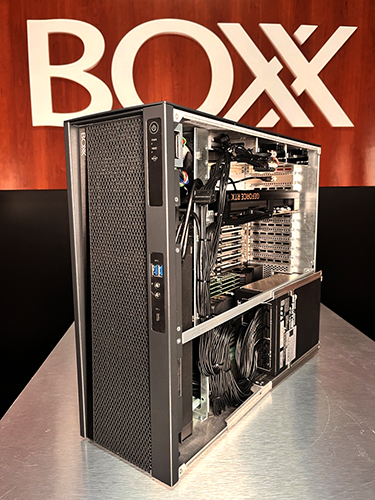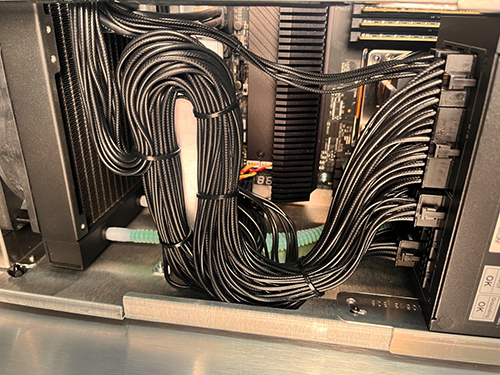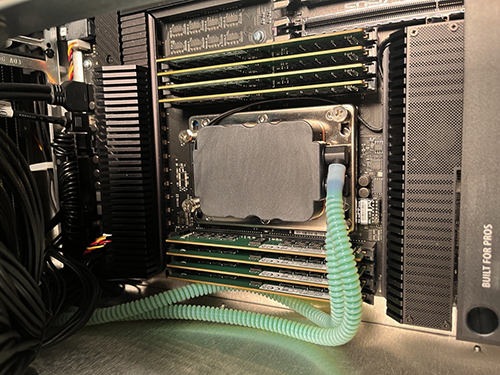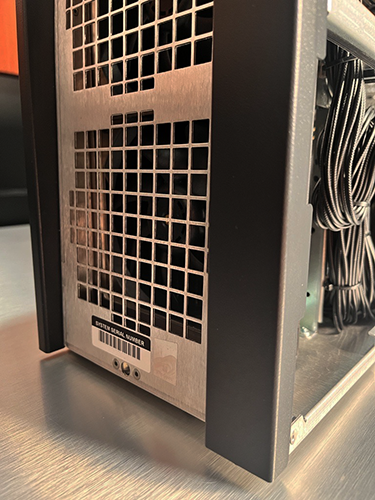Full disclosure: I use a BOXX APEXX T3 powered by an AMD Ryzen™ Threadripper™ processor and I love it. I cut video using both Avid and Adobe Premiere Pro and this workstation absolutely rocks like no other. Does it have the brand new AMD Ryzen™ Threadripper™ PRO 7000 WX -Series processor? No, it’s an older chip, but still a beast for whatever I throw at it.
So why is this relevant? 
Those new AMD Ryzen Threadripper 7000 processors are significantly faster and more powerful than previous versions. Besides providing tremendous performance for the aforementioned applications (and a host of others like Autodesk 3ds Max, Maya, and Revit, SOLIDWORKS, DaVinci Resolve, Cinema 4D, V-Ray, KeyShot, Blender, and Unreal Engine), these powerful procs (like all CPUs) generate a substantial amount of heat. You want top-of-the-line, high-performance processing? One byproduct is heat and too much of that heat will prevent you from optimizing all your new Threadripper and creative applications have to offer.
It’s simple. Just like a car running hot, you don’t want your workstation running hot. Heat is the destructive enemy of system components. That’s why, at the bare minimum, every PC has fans. But even with quality air cooling, a high performance CPU like the Threadripper PRO is susceptible to thermal throttling. Thermal throttling is when the CPU slows down to avoid overheating due to increased warming under a heavy workload. And when the CPU slows down, so do application tasks and your workflow. The solution is liquid cooling, which enhances system performance by keeping the CPU cool—even under the most demanding tasks.
Air Cooling vs Liquid Cooling
Obviously, cooling is critical for any workstation, so it’s important to understand the difference between the two types. The primary difference? Liquid cooling does a way better job than air cooling at relocating heat outside of the system rather than inside. The process of liquid cooling starts with a baseplate that is connected to the integrated heat spreader of the CPU. The metal surface of the baseplate is part of the waterblock that is designed to be filled with coolant to absorb heat from your desk side workstation. The coolant then moves through the waterblock into the radiator, exposes the liquid to air, and prompts the fans attached to the radiator to diffuse the heat away from the cooler. This cycle is repeated and works to cool your system to prevent backup of heat. In short, it keeps your Threadripper PRO workstation running efficiently.


For the record, the new BOXX APEXX T4 PRO is the only liquid-cooled, AMD Ryzen Threadripper PRO 7000 Series processor-based workstation (up to 96 cores) on the market. Now that you’ve neared the end of this blog, you know why that’s a big deal.
 And just so you know that we don’t ignore air cooling, APEXX T4 PRO’s top-to-bottom grill is specifically designed to optimize air intake. At BOXX, we performance tune our systems to run at their peak, so we also keep them running cool in order to maximize performance and accelerate your workflow. Lower cost, commodity PCs are typically not engineered as such, so they disperse concentrated heat over the motherboard and other components, vastly increasing the chances of thermal throttling.
And just so you know that we don’t ignore air cooling, APEXX T4 PRO’s top-to-bottom grill is specifically designed to optimize air intake. At BOXX, we performance tune our systems to run at their peak, so we also keep them running cool in order to maximize performance and accelerate your workflow. Lower cost, commodity PCs are typically not engineered as such, so they disperse concentrated heat over the motherboard and other components, vastly increasing the chances of thermal throttling.
Today’s high-performance CPUs require liquid cooling. You get that with BOXX. Configure your new APEXX T4 PRO with an AMD Ryzen Threadripper PRO 7000 WX–Series processor AND liquid cooling by calling 877.877.BOXX or via online chat at boxx.com.




